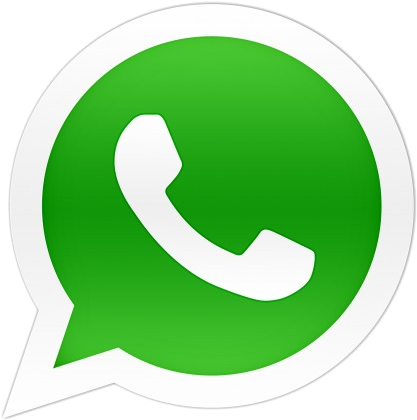Own bone marrow stem cells transplantation
At the Mardaleishvili Medical Center an own bone marrow stem cells transplantation to patients with
autism clinical study is conducted. Patients with childhood autism and autistic spectrum disorders can
participate in the treatment. The treatment by nature is patient’s bone marrow withdrawal in our hospital,
extraction of stem cells and injection of them into the spinal trunk (intrathecally).
Procedure
Patient is admitted to our clinic in the morning. On the empty stomach the patient has pre-surgery
examinations done (complete blood count, coagulogram, immune phenotyping of lymphocytosis (CD3, CD4, CD8, CD19, CD25, CD56), determination of blood group and rhesus, serum screening for viruses (HIV, HCV, HBV), liver and kidney function (ALT, AST, total bilirubin, creatinine, blood urea, blood glucose), leukocytolysis – allergy tests to the products to be used for anesthesia of the patient, ECG, spinal X-ray, if necessary). If patient doesn’t have the results of any tests, which they had to admit before arriving to clinic (e.g. genetical test, or something else) these tests can be held here.
Next day, starting from morning on the empty stomach (minimum 5 hours before procedure the patient must
not take food or drink) will be held the procedure of withdrawal the bone marrow and transplantation.
Protocol of preparation for withdrawal and transplantation of cells:
Bone marrow withdrawal
Before the transplantation bone marrow is withdrawn from the ilium bone, from its anterior and posterior tubercle (by puncture). Due to the fact that this procedure is quite painful and requires the patient to lie in one place, which is difficult to achieve in case of children, it will be done under general anesthesia. The procedure will be conducted in our hospital in the surgery unit. General anesthesia (pain management) is conducted after an intravenous injection by an anesthesiologist of Dormicum and Diazepam antianxiety drug. Anesthesiologist injects a special product (Propofol) in advance and, possibly, Sevoflurane, which is a general anesthetic. After the bone marrow puncture a specialist conducts a withdrawal of 50-100 ml of bone marrow. This procedure lasts for 15-30 minutes. Withdrawal of such amount of bone marrow does not require additional blood transfusion, as well as intravenous transfusion of infusion solutions (by dropping bottle). Release of mononuclear cells is done by a special method (in so called ficoll density gradient) according to the instructions of the manufacturer. It is the mononuclear cells fraction that contains haematogenic and mesenchymal stem cells. The obtained amount of cells is suspended in 1 ml of
physiological solution for intrathecal transplantation. Serious complications are rare, but rise temperature up to 37.5 °С, pain at the puncture site, hemorrhage, wound infection are possible. Processing of the bone marrow lasts for several hours. During this time the patient is monitored in the post-surgical unit. As soon as the cell suspension gets into the surgery unit, preparation of patient for lumbar puncture is done straight away. General anesthesia is conducted after the injection of Dormicum or Diazepam antianxiety drug to the patient. A specialist injects the prepared suspension into the spinal canal.
Spinal canal puncture or lumbar puncture
The puncture is done between the third-fourth lumbar vertebra. After treatment of the wound with alcohol iodine solution is applied in the area of lumbus, which subsequently is removed with alcohol. The patient is asked to lower the head and lower limbs down at maximum. Use a needle with mandrin, 5-10 cm length, 2-3 mm diameter. The puncture is done lower than the third lumbar vertebra, the needle gets into the subarachnoid cavity in the area of cauda equina. In this area there is already no spinal marrow, it ends at the level of the first vertebra and that is why its damage during puncture is excluded. After the puncture with a needle, a syringe with therapeutic cells (the volume is 1 ml) is attached to it, and cerebrospinal fluid in injected. Then the needle is removed, the puncture site is treated with iodine solution and a plaster is applicate. After the puncture the patient lies on the back, with no pillow for 2-3 hours. During the same period the patient is monitored in the intensive and post-surgery care unit. After awakening of the patient the monitoring continues in the post-surgery unit, and after 2-3 hours he (she) is transferred to a private ward, he (she) continues to be monitored for the detection of possible complications. In case of absence of complaints in the morning of day 2 the patient is discharged from the hospital.
Contraindications for lumbar puncture
Epidural infection, skin infection at the site of puncture, coagulopathy (blood-clotting disorder), low platelet count ((<50 х 109/l), acute infection, aggravation of any chronic disease, temperature (>37,5), anticoagulants (for example, warfarin, heparin, low molecular weight heparins), antiaggregants (for example, aspirin, clopidogrel), non-steroidal anti-inflammatory agents (for example, indomethacin, diclofenac, ibuprofen). In this case it is necessary to discontinue administration of these products in advance:
- in case of heparin and low molecular weight heparins – 12-24 hours before.
- in case of warfarin – 5 days before;
- in case of aspirin and other non-steroid anti inflammatory agent – 3 days before;
- in case of clopidogrel – 9 days before.
About possible complications of using the autological stem cells
In case of use of own not multiplied bone marrow stem cells, no hazard for the immune incompatibility or any even insignificant theoretical genetic variation. According to the up to date experience no any serious complications, including the risk of tumor development, have been reported in the use of many thousands of stem cells. In the complications include side effects, developed during the first days after the procedure. They are reported quite rarely and may be both side effects related to the injection of cells, and related to the anesthesia and lumbar puncture.
Early complications related to the administration of the cell suspension
- In rare cases mild hypersensitivity reactions may develop, for example, non-intensive allergic cough and erythema – hyperemia. Acute anaphylaxis is not described, theoretically it can’t be excluded, though the method used in preparation of stem cells almost completely excludes the injection of foreign allergens. As nerves system disorders patients may have mild excitability, which spontaneously resolves 1-2 days after the transplantation.
- The development of a severe hypersensitivity reaction may be expected only within the first hour after the transplantation. During this period the patient is monitored in the surgery unit.
For more detailed information, please contact to the International Department of clinic!





